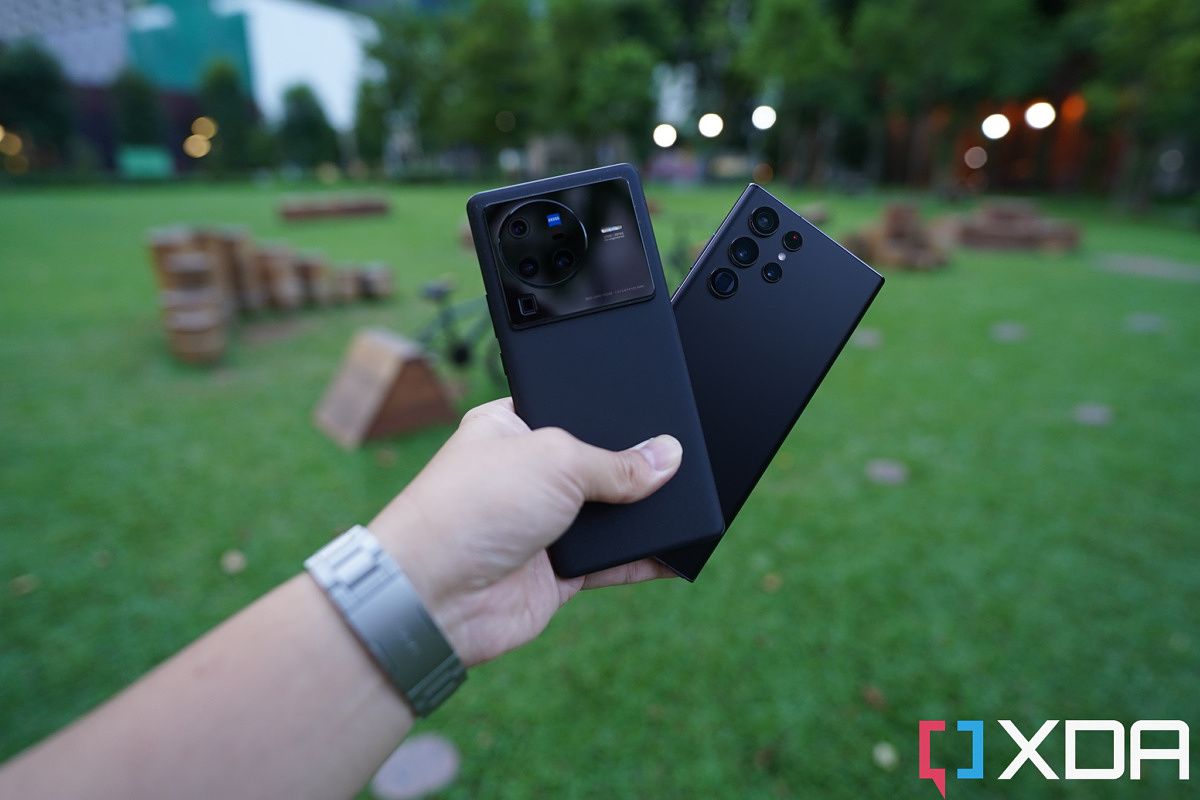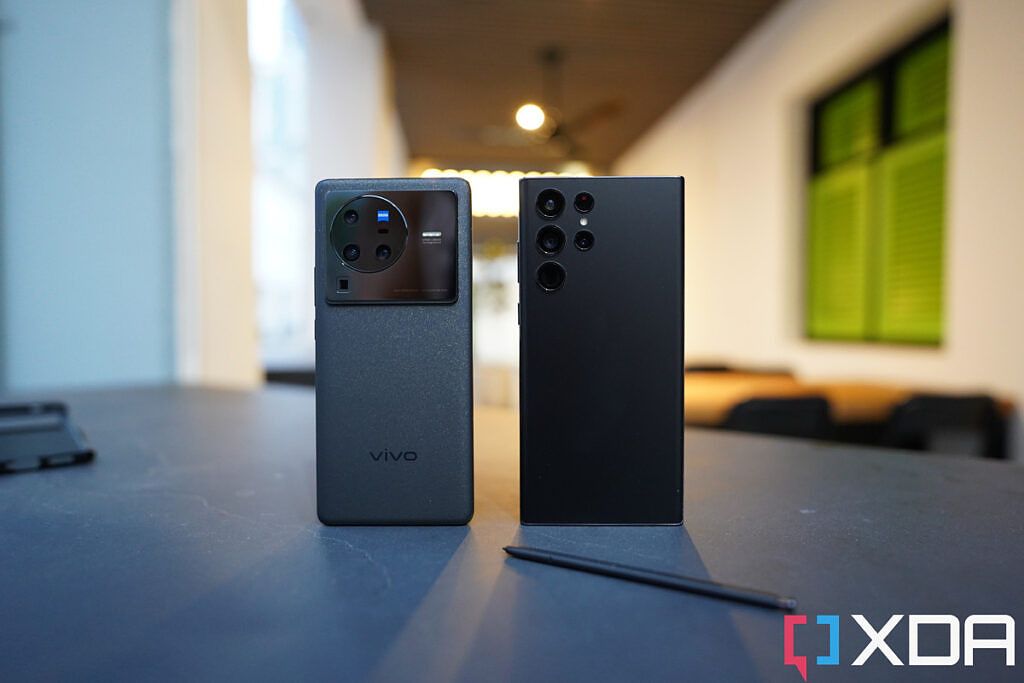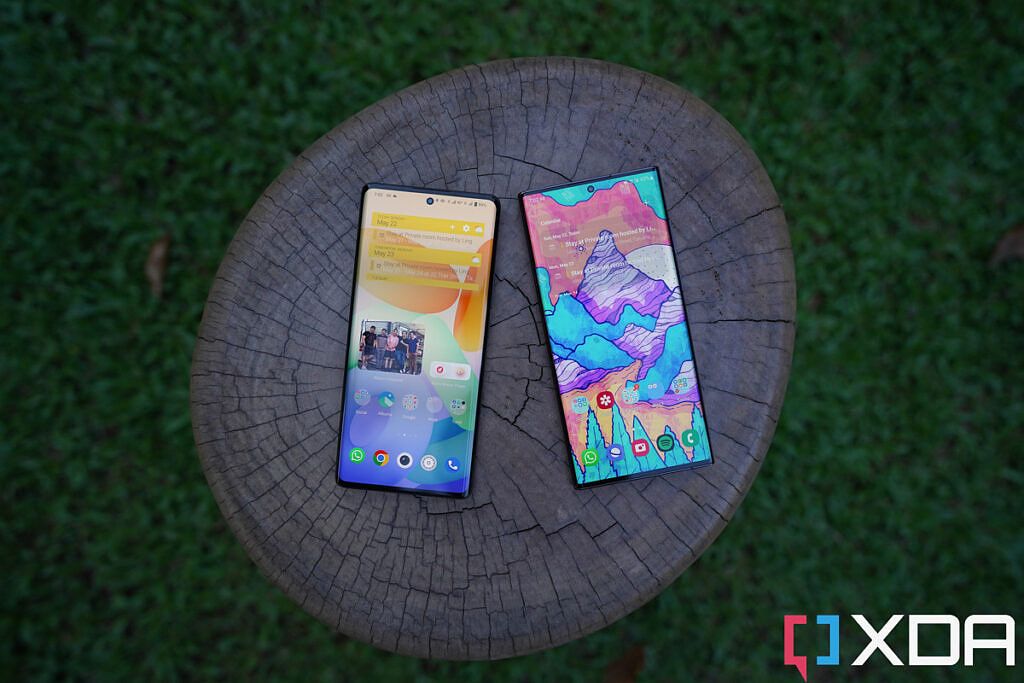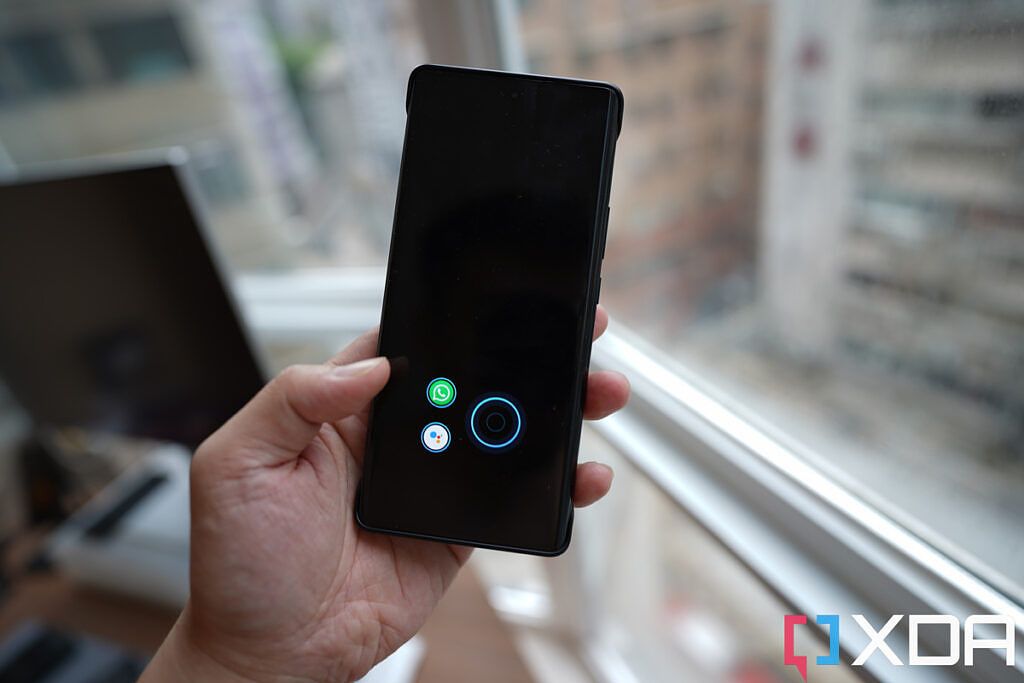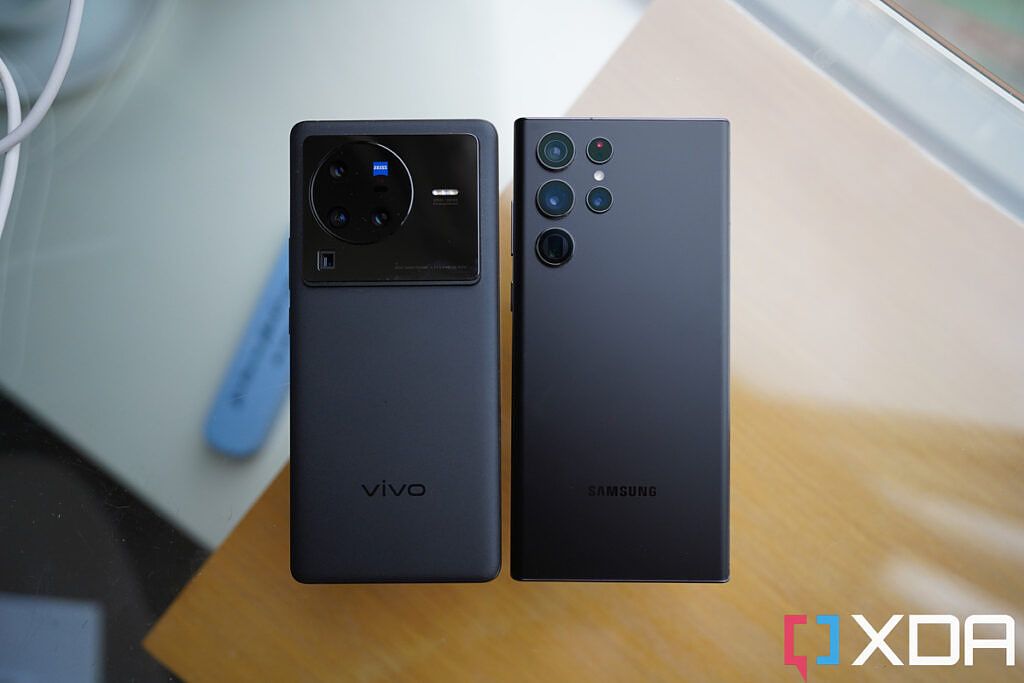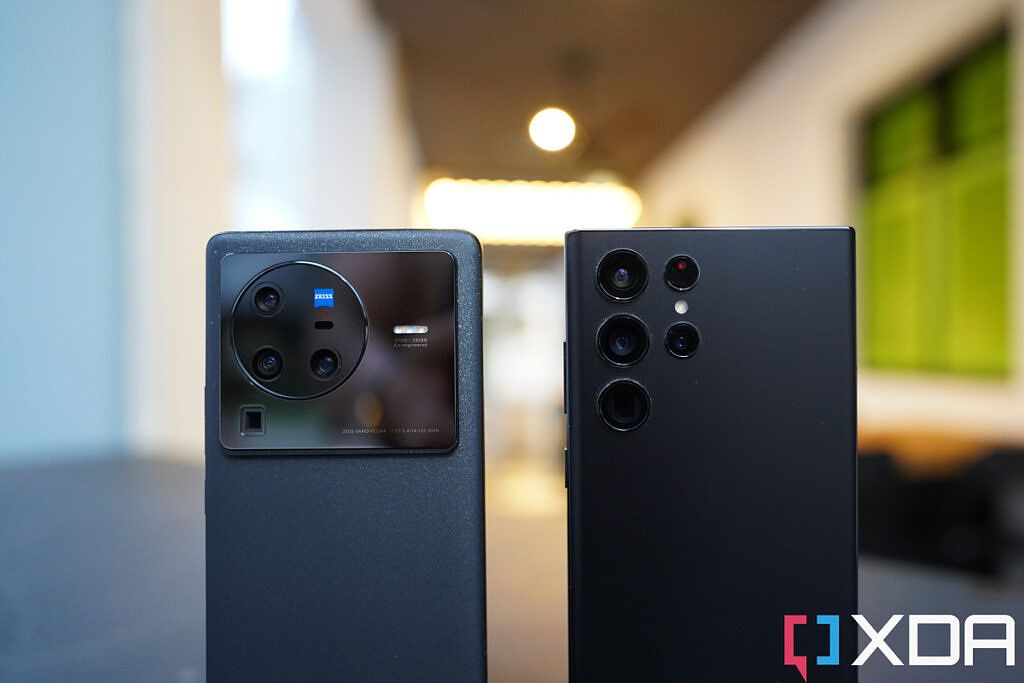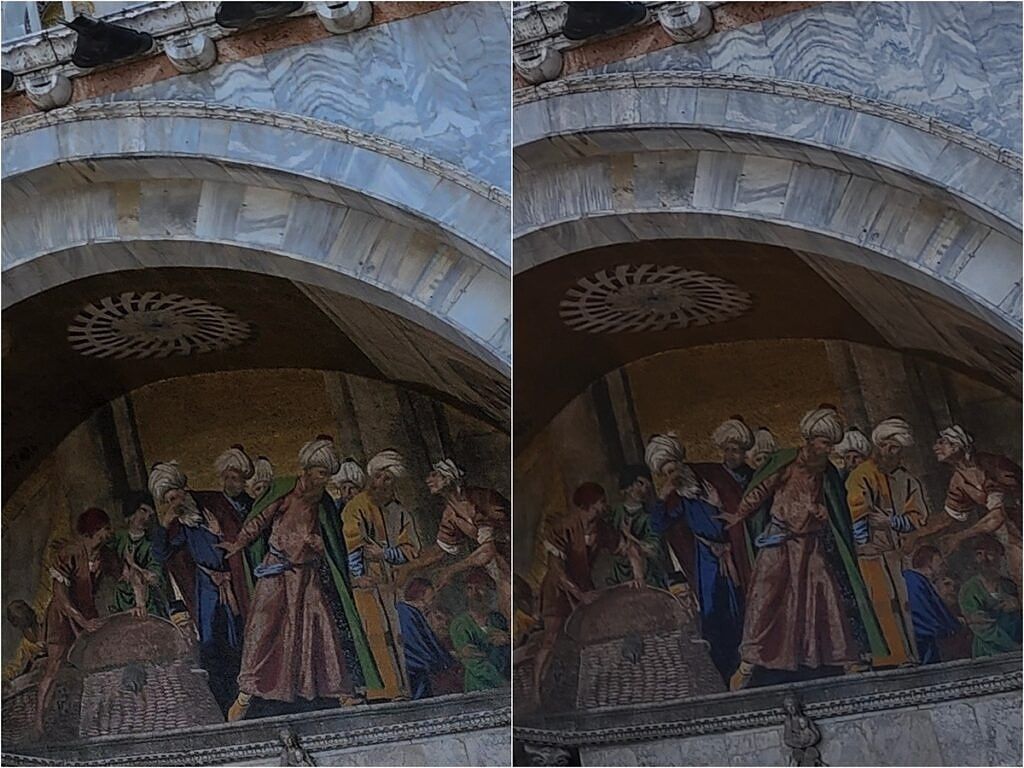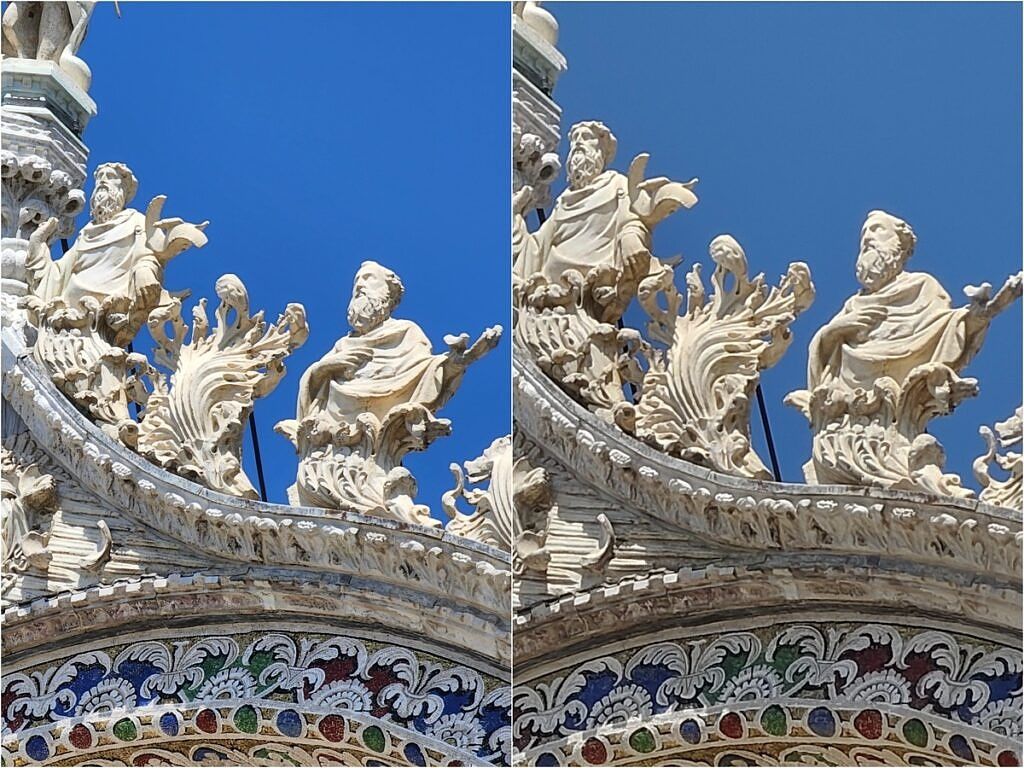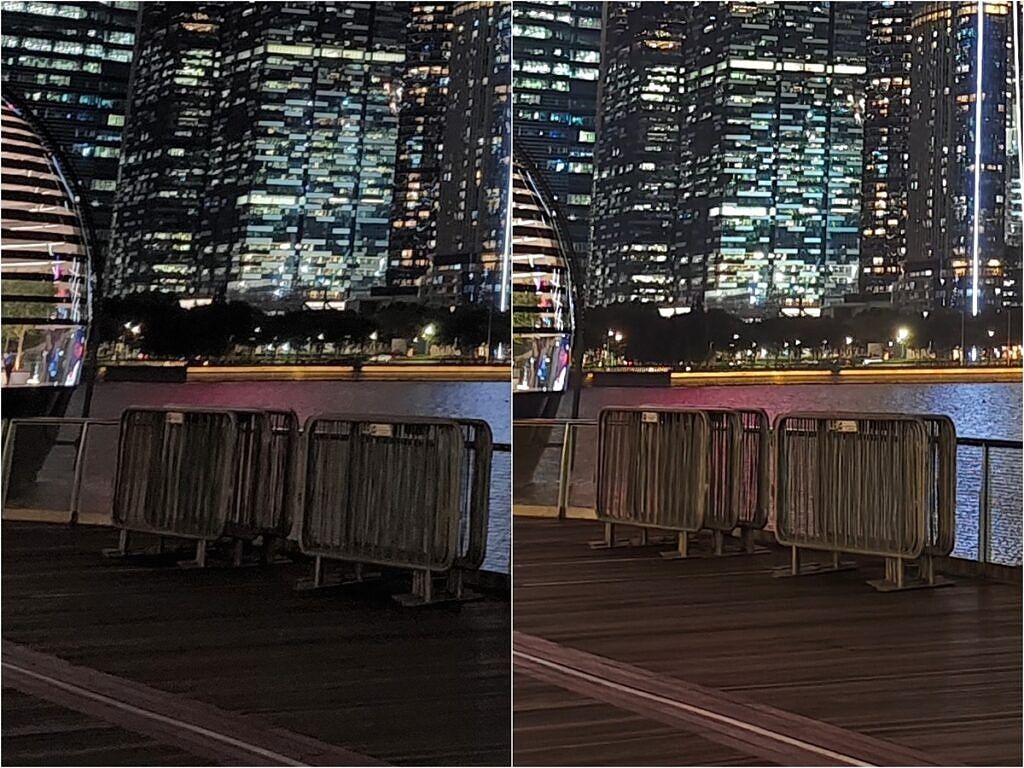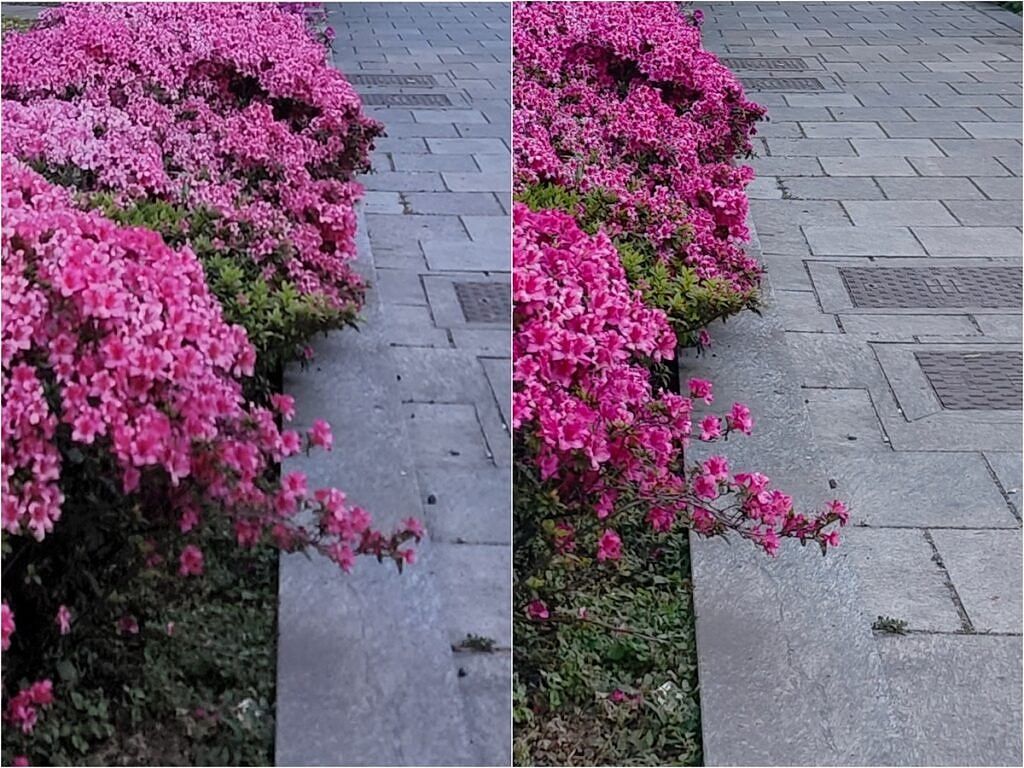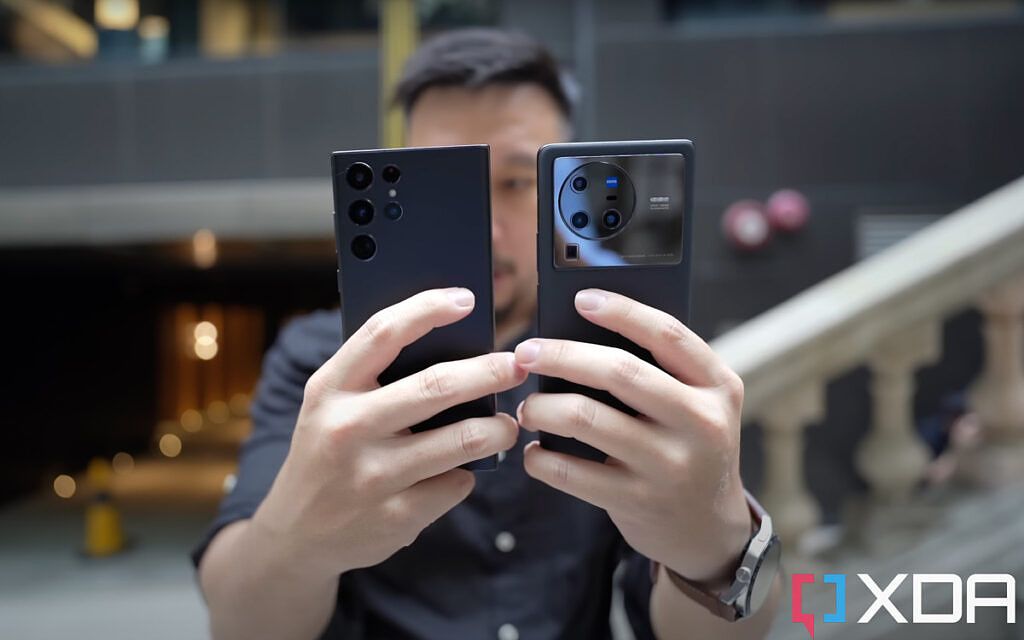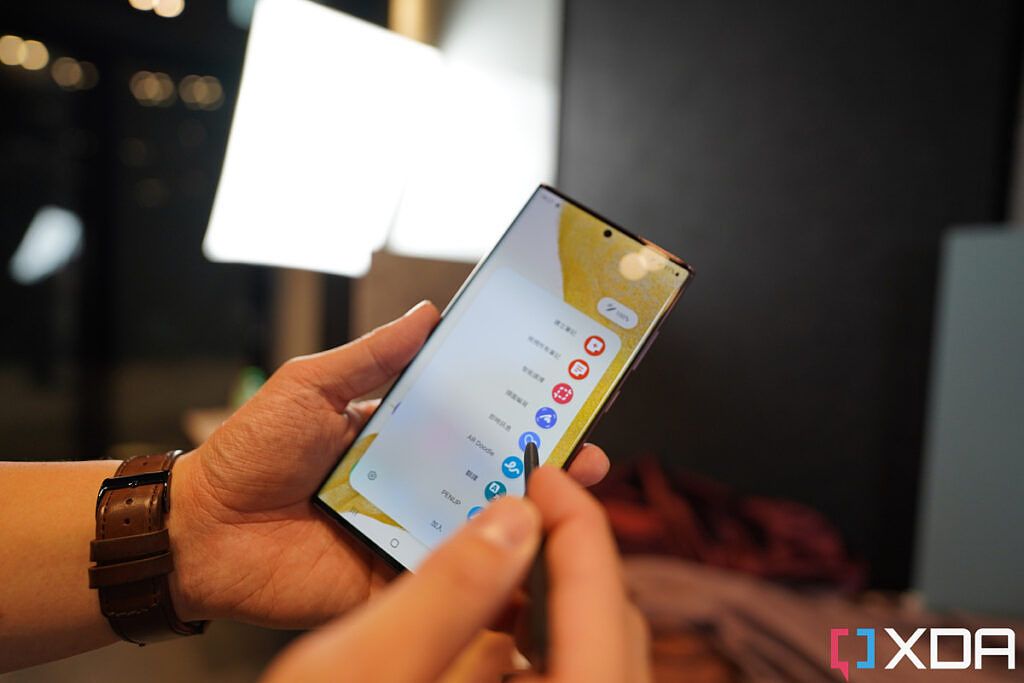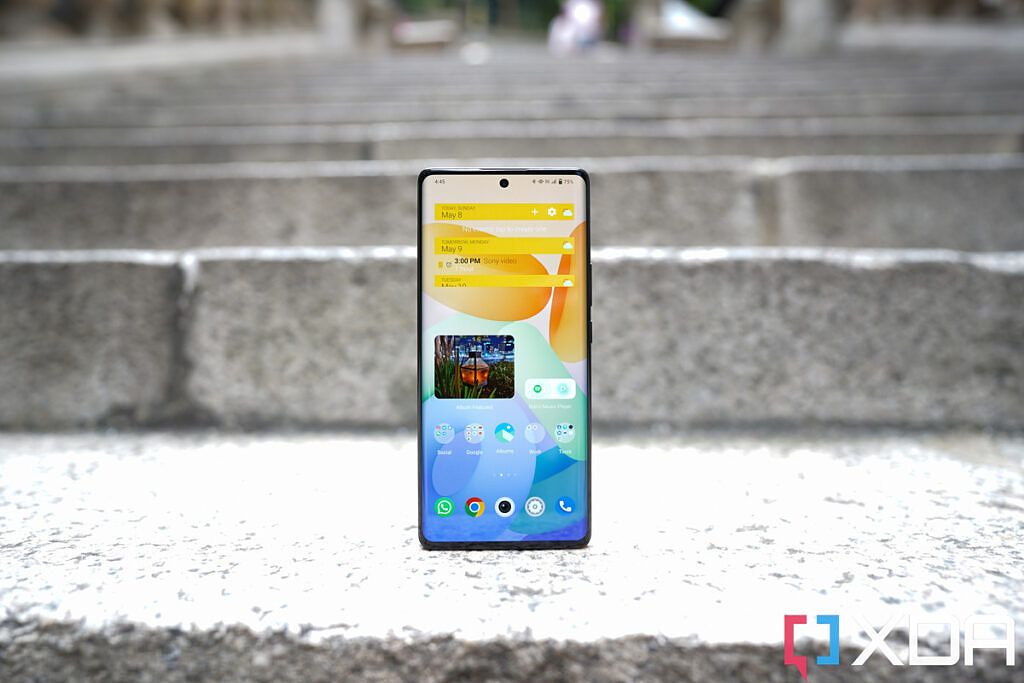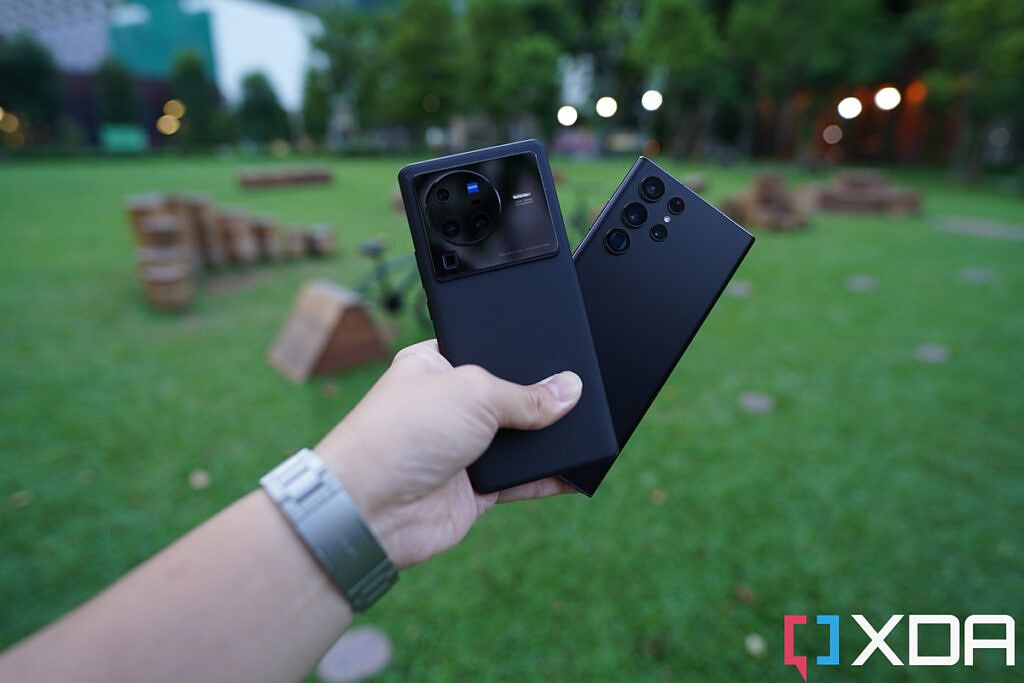While Vivo is still flying under the radar in most chunks of the world, it's beginning to catch the attention of phone fans for its incredible cameras, and the company's latest, the Vivo X80 Pro, continues that strong camera streak. But how does the rest of the phone fare, particularly against the Android flagship, the Samsung Galaxy S22 Ultra? Let's find out in this general overview that examines every facet of the smartphone experience.
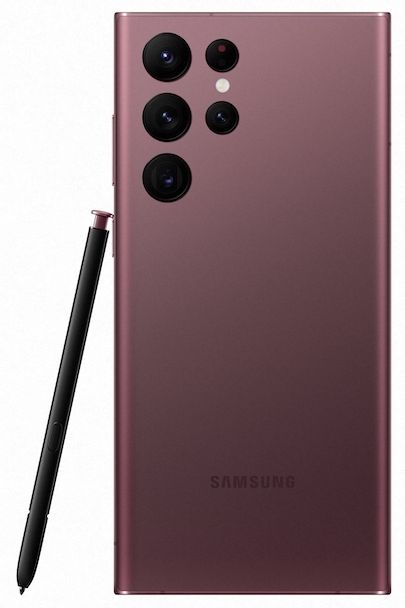
Samsung Galaxy S22 Ultra
The Galaxy S22 Ultra is by default the king of Android phones right now, with the widest global availability and the most complete camera system.
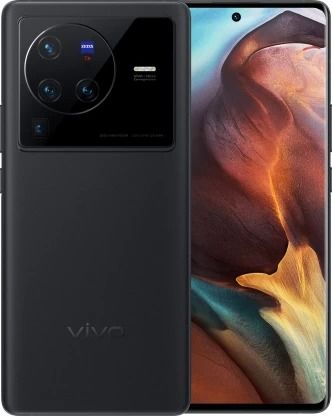
Vivo X80 Pro
The Vivo X80 Pro has our vote for the best main cameras of any smartphone right now, and the rest of the package is pretty good too.
Samsung Galaxy S22 Ultra vs Vivo X80 Pro: Specifications
|
Specifications |
Vivo X80 Pro |
Samsung Galaxy S22 Ultra |
|---|---|---|
|
Build |
|
|
|
Dimensions & Weight |
|
|
|
Display |
|
|
|
SoC |
Qualcomm Snapdragon 8 Gen |
|
|
RAM & Storage |
|
|
|
Battery & Charging |
|
|
|
Security |
Optical in-display fingerprint reader |
Ultrasonic in-Display fingerprint scanner |
|
Rear Camera(s) |
|
|
|
Front Camera(s) |
32MP |
40MP |
|
Port(s) |
USB-C |
USB-C |
|
Audio |
Stereo speakers |
Stereo speakers |
|
Connectivity |
|
|
|
Software |
FunTouch OS 12 over Android 12 |
One UI 4.1 over Android 12 |
|
Other Features |
Dual physical SIM |
Single physical SIM in Korea and US; dual physical SIM in most other regions |
About this article: This comparison was written after testing a Samsung Galaxy S22 Ultra provided by Samsung Hong Kong and Vivo X80 Pro provided by Vivo Global. This article also includes input from XDA's Editor in Chief, Aamir Siddiqui, using his personal Galaxy S22 Ultra and an X80 Pro provided by Vivo India. Vivo India additionally took Aamir and other Indian media persons and YouTubers to Dubai for an immersion session centered around the phone. Vivo is also running a campaign on XDA around this phone, but that is handled by the sponsorship team independent from the editorial team. Neither Samsung nor Vivo had any input in this article.
Samsung Galaxy S22 Ultra vs Vivo X80 Pro: Design and Hardware
The Vivo X80 Pro and Galaxy S22 Ultra come in designs that are clear continuations of a previous device in the company's portfolio. For the X80 Pro, that lineage is obvious -- it looks almost identical to the Vivo X70 Pro Plus, save for a circular camera module. The Galaxy S22 Ultra, on the other hand, descended from Samsung's retired Galaxy Note series, with those boxy corners and the S-Pen slotted into the bottom-left base of the device.
Although both screens are 6.8-inches on paper (this measurement is taken diagonally), the Galaxy S22 Ultra's screen is slightly larger: it's wider horizontally by a few millimeters and the corners of the screen push out further due to them coming to a hard point instead of a rounded radius. In terms of display brilliance, both screens look equally sharp and punchy, but the Galaxy S22 Ultra gets a bit brighter. I want to stress that this isn't the case of Vivo's display lacking in brightness (like, say, the Google Pixel 6 Pro's mediocre screen brightness), but rather the Galaxy S22 Ultra going above and beyond in maximum brightness. For the most part, if you're using the phone under anything but direct sunlight, the X80 Pro screen is absolutely as visually impressive as the Galaxy S22 Ultra's.
Underneath the screens lay the first deviation: the phones use ultrasonic fingerprint scanners from Qualcomm, but Vivo uses the newer and better Qualcomm 3D Sonic Max solution: not only does it unlock just a beat faster than the older version, but the scanning area is also much larger, so you can blind unlock faster, and there are additional software tricks like the option to launch an app directly by pressing a specific part of the scanner as well locking apps behind a two-finger lock.
The backsides of the phone are both made of glass, but Vivo applied this silky frosted coating to it -- of which I am not a fan (it feels slithery to my fingers). I prefer the simple matte grippy coating of the Galaxy S22 Ultra. But the Vivo X80 Pro is a slight bit more comfortable to hold in the hand than the Galaxy S22 Ultra.
Otherwise, the other conventional smartphone components are similar: the same Snapdragon 8 Gen 1 chip in both my units (some regions get a Galaxy S22 Ultra with an Exynos chip, however) as well as 12GB of RAM. Samsung's phone has the option to go higher in storage option up to 1TB while Vivo, at least globally, is only selling a 256GB model. Both phones offer IP68 water and dust resistance and support for wireless charging. Samsung's battery is larger at 5,000 mAh, but Vivo's 4,700 charges much, much faster -- and the charger is included. The Galaxy S22 Ultra has a noticeably better haptic engine and a slightly fuller/louder stereo speaker too. But the X80 Pro offers an IR blaster for those who find it useful.
The big standout hardware difference is perhaps the stylus -- the Galaxy S22 Ultra has one, but the X80 Pro does not. To me personally, the stylus is a nice bonus, but I rarely use it, and more importantly, never miss it when I'm reviewing another phone. But for the sake of a direct comparison, an extra hardware feature is an extra hardware feature.
An extra hardware feature is an extra hardware feature, and the Galaxy S22 Ultra has the S Pen
Both phones pack really awesome camera systems -- and I'm a big camera guy -- so I'm giving the cameras their own section. But so far, if we're judging hardware outside of the cameras, the Galaxy S22 Ultra is a bit more polished, complete package.
Samsung Galaxy S22 Ultra vs Vivo X80 Pro: Cameras
The Galaxy S22 Ultra is the most complete and versatile camera system with four lenses covering the ultra-wide, wide (main), telephoto, and 10x zoom range. As I wrote in my previous Vivo vs Samsung versus piece, Vivo seems to be the only Android brand even trying to match Samsung on this front, as the X80 Pro too offers four lenses including two zoom (no one else but these two brands are putting two zoom lenses on a phone right now). But while Vivo's ultra-wide and main camera are awesome, its telephoto and Periscope combo is noticeably weaker than the Galaxy S22 Ultra's.
Let's start by looking at shots captured by all four lenses of each phone side-by-side. Both phones' ultra-wide covers around the same 120-ish degree field-of-view for an equivalent of around 16mm with a "real" camera, the wide (main camera) lens also has a similar field-of-view. Where the phones differ is in the zoom -- Samsung's can just go so much further, up to 10x optical zoom to Vivo's 5x optical. We can also see the Galaxy S22 Ultra does a slightly better job keeping colors consistent across all four lenses, there's a bit of color temperature deviation between Vivo's zoom lenses and wide lenses.
Because the above set is shot under what is considered good lighting conditions, the difference in quality between the two cameras is not too pronounced. For example, zooming into the main camera photos 100% will show the Vivo image exhibits a bit more details (you can see the texture of the marble tiles better), but it's not too big a difference.
Likewise, if I manually size up Vivo's 5x zoom shot to match Samsung's 10x shot framing (essentially showing a Vivo image at 200% to Samsung's 100%), we can see Samsung's image is sharper but Vivo's shot is still more than serviceable.
It is when we move to night photos -- or low light conditions -- that we start seeing differences between these two cameras.
The above photos look great on a phone screen or even in gallery format here in this article. But if you dial in t0 100% and examine on a larger screen, then we can see Vivo's 50MP main camera using a new GNV sensor (ironically developed by Samsung) is just superior in pulling in details and light to Samsung's 108MP HM3 sensor.
In general, Vivo X80 Pro's main camera will always produce a brighter and sharper image than the Galaxy S22 Ultra -- the former is noticeable right away, the latter only if you punch in and pixel peep.
Another major win for the X80 Pro is, like the X70 Pro Plus, it produces uncanny HDR shots that are perfectly balanced with every light source properly exposed. Look at the below samples, you can see in every instance that the Galaxy S22 Ultra blows out some light source, while the Vivo X80 Pro did not. Part of this is Vivo's V1+ imaging chip, and part is due to the Zeiss T-coating which reduces lens flare.
During the day too -- here, the Galaxy S22 Ultra could not handle the harsh Italian sunlight overlooking the canals of Venice.
But when it comes to zoom photos, it's no contest: the Galaxy S22 Ultra's 10x zoom shots are still sharper than Vivo's 5x zoom shots.
For video recording, the Galaxy S22 Ultra has slightly better stablization and captures better audio, but the X80 Pro's videos are noticeably brighter. This definitely benefits the X80 Pro in low light footage, but also works against it during the day as Samsung's day footage looks a bit more natural. Still, the night time footage is quite a win for Vivo, as the Galaxy S22 Ultra's video is noticeably noisy.
The Vivo X80 Pro has better main and ultrawide performance, but the Samsung Galaxy S22 Ultra has a zoom lens that makes it comparatively more versatile
To wrap up the camera section, we need to stress that both the phones are amazing. But for the sake of comparison, the Vivo X80 Pro has a better general photography and videography camera. On the flip, the Galaxy S22 Ultra has a better zoom camera, marking it as more versatile.
Samsung Galaxy S22 Ultra vs Vivo X80 Pro: Software and Features
Both phones run Android 12 with each company's custom skin on top: One UI 4.1 on the Galaxy S22 Ultra, and FunTouchOS 12 for the X80 Pro. While I think FunTouchOS has a bit more fluid animations than One UI, which famously suffers from dropped frames when scrolling through Twitter or closing apps. But other than this minor aesthetic thing, One UI is just a more polished UI that can do more.
A key win for One UI is multi-tasking. While both phones can do split-screen multi-tasking fine, the Galaxy S22 Ultra can open more apps in floating window mode (Vivo's FunTouch won't open Slack in floating mode while the Galaxy S22 Ultra can, for example), and One UI allows floating windows to be shown in a semi-transparent form if needed, as well as shove the app to the edge of the screen where it is still running but mostly out of the way.
Samsung's One UI also has DeX Mode, the ability to launch a sandbox UI to another display (wired or wirelessly) that looks and behaves like a Windows PC homescreen. Add in the additional software features that come with the S-Pen such as using the stylus as a remote control. and it's a no contest. There's almost no useful feature FunTouchOS offers that One UI doesn't, but there are close to a dozen One UI features that FunTouchOS lacks.
On top of that, Samsung is guaranteeing one more year of software updates for the Galaxy S22 Ultra (four) to Vivo's three years. So it's a clear win for Samsung on the software front.
There's almost no useful feature FunTouchOS offers that One UI doesn't
This isn't to say One UI isn't without its annoyances: Samsung's first-party apps will blast a pop-up message asking me if I want to update the app every couple of weeks (because these are Samsung first-party apps, updating can't be done automatically in the background via Google Play apparently -- you must manually tap on the pop-up menu); I dislike that Samsung's app tray scrolls horizontally instead of vertically, and as mentioned earlier, One UI's animations just aren't as smooth. If you've swiped around a recent OPPO/OnePlus flagship, you'd know what I'm talking about -- those UIs just feel faster and smoother.
Samsung Galaxy S22 Ultra vs Vivo X80 Pro: General Performance
As a smartphone doing day-to-day tasks like surfing the internet, scrolling social media, and communicating with people using a half dozen apps (Slack, WeChat, WhatsApp, Telegram, Signal, Line), both phones perform absolutely fine. Because the Vivo X80 Pro model I'm testing is a global version, it does not suffer from the aggressive background management that kills push notifications the way Vivo's China-only phones do, although my colleague Aamir had a different experience in India with Funtouch OS. For me, apps rarely crashed and launched quickly too. Important caveat: I am testing the Snapdragon 8 Gen 1 version of the Galaxy S22 Ultra, not the Exynos, which according to my colleague Adam Conway's testing does not perform nearly as well.
Benchmark numbers are close enough in overall benchmark tests from Geekbench and PCMark, but if you really push both phones with graphically intensive tasks then the X80 Pro seems to have better thermals, thus less throttling. We can see the X80 Pro performed significantly better in the Wild Life Extreme Stress Test in the app 3DMark (this is a 20-minute graphics-heavy test). You can see the Galaxy S22 Ultra throttles badly after the first few minutes, while the X80 Pro kept performance consistent. Still, you won't really notice this difference unless you're a heavy mobile gamer.
As media consumption machines, I prefer the Galaxy S22 Ultra due to its larger screen size, and slightly fuller-sounding speakers. And due to the inclusion of a stylus, Samsung's phone is clearly superior if you need to do any type of work that needs a finer point of input than a human finger, such as cropping a specific shape out of a photo or signing PDF documents.
One final win for Samsung -- battery life is slightly better too. I was recently working on the road in Italy and Singapore, meaning I was outside doing things longer than an average day in Hong Kong. During these outings, I would constantly be on Slack, Gmail, and Chrome while also using the cameras and other forms of social media often. There's much harsher sunlight in Italy so the phone screens had to be on 100% more often, and I was using a travel SIM with both phones roaming. I noticed that the Galaxy S22 Ultra can last about eight hours under such heavy use scenario, about 20-30 minutes longer than the Vivo X80 Pro. Keep in mind these are very heavy active use days -- on a regular day, both phones can last a full 13/14-hour day on one charge.
The Vivo X80 Pro charges so, so much faster than the Galaxy S22 Ultra
But here's where Vivo takes a crucial win -- because my phones would be just about dead by 5 pm or 6 pm after an early 9 am start, I made a habit of stopping back at the hotel around this time too for a top-up (and a shower) before I head out for more night exploring. The Vivo X80 Pro can top up so, so much faster than the Galaxy S22 Ultra. With the X80 Pro's included 80W fast charging brick, I only need to plug in the phone for 10-15 minutes, and I know the X80 Pro would be back to 60+%, ready to go late into the night without battery anxiety. The same time charging a Galaxy S22 Ultra (using a MacBook 96W charging brick because the Galaxy S22 Ultra doesn't include a charger) would only top the Galaxy S22 Ultra to like 30-35%, which would still leave me with battery anxiety if I stay out past 10 pm. Vivo's fast charging makes a huge difference during traveling because 10 minutes is all I need to solve any battery anxiety -- the Galaxy S22 Ultra would need a good half an hour of charging to achieve the same results.
Samsung Galaxy S22 Ultra vs Vivo X80 Pro: Which phone is better?
Both the Vivo X80 Pro and Galaxy S22 Ultra are really, really damn good, and readily get my votes for the two best phones out right now. In terms of immediately noticeable things like display brilliance or UI zippiness and general performance, both phones are pretty much neck and neck.
The Vivo X80 Pro has a noticeably better camera in general photography using the main and ultra-wide cameras, particularly at night, but the Galaxy S22 Ultra has the best-in-class zoom system that produces jaw-droppingly sharp 10x zoom shots. I live in a really dense city with a lot of buildings and things around me, so I use the Galaxy S22 Ultra's 10x, 20x shots several times a day. But for most people, the main and ultra-wide cameras are more important, and Vivo just produces sharper and brighter photos.
Moving into niche performance territory, the X80 Pro is also a better gaming machine, but the Galaxy S22 Ultra is a better multi-tasking productivity machine. The Galaxy S22 Ultra offers better battery life, but Vivo offers a much faster charging brick with the package -- along with a nice faux-leather case too.
Both phones are priced very close in price in Europe too, but the X80 Pro is roughly $100-ish cheaper than the Galaxy S22 Ultra in Asian regions such as Hong Kong, and Singapore. In India, the X80 Pro is over $300 cheaper, tipping the scales so much more in its favor. As for the US, of course, the X80 Pro isn't on sale in the region; so if you don't care to import, your decision has already been made.
I suppose the addition of the S-Pen, more polished software, and one extra year of security along with wider global availability will make the Galaxy S22 Ultra still the better choice for most readers. But if you really care about snapping awesome night time photography, the Vivo X80 Pro is the best right now. Irrespective, both phones remain amazing.

Samsung Galaxy S22 Ultra
The Galaxy S22 Ultra is by default the king of Android phones right now, with the widest global availability and the most complete camera system.

Vivo X80 Pro
The Vivo X80 Pro has our vote for the best main cameras of any smartphone right now, and the rest of the package is pretty good too.

